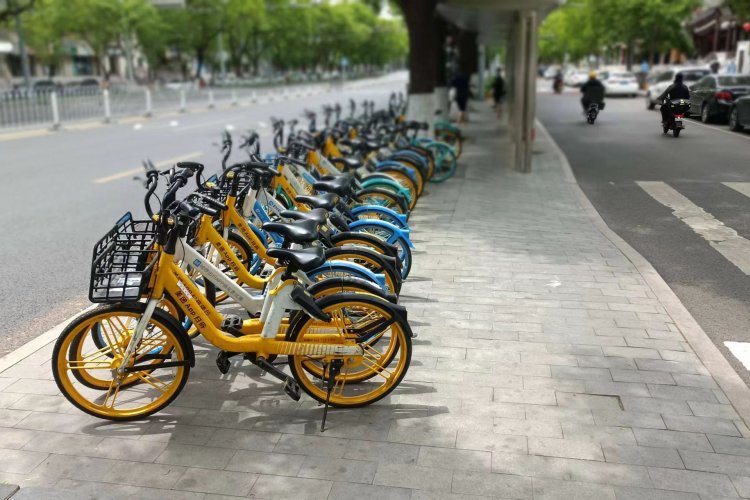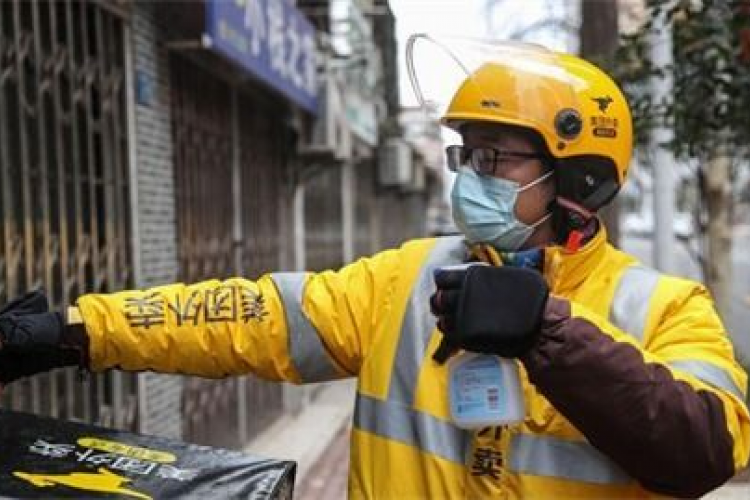China’s Ride-Hailing Resurgence Is Just Another Step Into the Future of Mobility
China’s ride-hailing company Didi Chuxing earned the title of “Uber Slayer” in 2016. By selling its China business to its rival, Uber confirmed that the Chinese market was not only full of potential but peril. These days, however, things are changing with new arrivals challenging Didi’s dominance.
Meituan Dianping, the Tencent-backed O2O service platform which is now eyeing a Hong Kong IPO, has gotten the most headlines locally, but there is also China’s largest travel agency Ctrip and Alibaba-owned AutoNavi. As Didi and Meituan start offering ride coupons once again, many are watching closely for signs of another subsidy war on the scale of Didi’s battles with Uber – a rivalry that led to billions of dollars of losses on both sides.
Didi now holds between 90-95 percent of the market, according to most often repeated estimates. However, China has room for more – consulting firm Roland Berger estimates that 40 percent of China’s taxi demand is unmet. And compared to the US, China is facing a much different ride-hailing landscape with greater bottlenecks in supply than demand, Vice President of Didi Stephen Zhu explained at a recent Goldman Sachs conference.
“If China ever gets to the car penetration level as the US, China will have well over 1 billion of cars with a population of 1.4 billion,” Zhu said noting that the current car ownership in the country stands as just 180 million.

However, Didi’s plan is to reach the future middle-class before they decide to buy their own vehicle – a task which may not be too hard considering the high costs of vehicles, license plates, parking, as well as driving restrictions in certain Chinese cities.
“The game in China is different from the US. Where a US player in ride-sharing has to convince people to get out of the car that they already own and to use their ride-sharing services,” said Zhu. “In China, on the consumer end, it’s all about persuading a fraction of the people who have the affordability and the intention to buy a car, to not buy it and stay with our services.”
Massive opportunity
The size of China’s market is just one part of the story. Companies are reinventing themselves into mobility platforms or offering Mobility as a Service (Maas). According to Roland Berger’s strategic advisor Johan Karlberg, the first wave of ride-hailing brought us platforms such as Uber, Lyft, and Didi which act as matchmakers between drivers and riders.
“Didi won Mobility 1.0 – it’s over. We are now seeing the emergence of Mobility 2.0 in China, and it’s a very different ballgame,” Karlberg told TechNode. Mobility 2.0 represents the second generation including not just getting from point A to point B but also value-added services.
Alibaba’s mapping and navigation platform AutoNavi has taken a different approach to ride-hailing – it aims to become a one-stop mobility aggregation platform, a representative told TechNode. Its platform Gaode Yixing integrates not only bike-rental options from Ofo and Mobike, but also Alibaba’s travel platform Fliggy, and more. After launching a car-pooling service in March, it now offers ride-hailing services from different companies. Similar to Didi and Meituan, it is now also throwing subsidies at users.

Didi, for instance, is looking into lowering the cost of ownership for of its vehicle fleet. Last week the company announced it will invest USD 1 billion its platform Xiaoju Automobile Service (XAS) which offers drivers in Didi’s network car lease and sales, cheaper gas at partner gas stations, repair services, and more.
Didi has also partnered up with more than 30 car makers and plans to roll out its own car model D1 specifically tailored for ride-hailing and car-sharing during the next 3-5 years. With its alliance, Didi wants to become the biggest operator of electric vehicles in China. And Didi is not the only one teaming up with manufacturers: cars made for on-demand mobility is likely to become a trend among automakers.
Car manufacturers could become device makers
“For mobility 2.0, the line-up in China will be more diverse – for example, many domestic OEM’s are investing heavily in mobility services,” said Karlberg.
A case in point is ride-hailing service Caocao Zhuanche. Chinese car manufacturer Geely owns 90 percent of its stake and most of its car fleet consists of Geely’s electric cars. As Caocao’s chairman Liu Jinliang told local media, manufacturers have to enter online car booking because there will be significant changes in the automotive industry in the future.
“Nowadays, cars are a transportation tool. In the future, cars will be intelligent mobile terminals just like mobile phones,” said Liu, noting that “car makers that are not entering the travel market are blind.”
Caocao is now present in 25 cities but unlike Didi, Meituan, and AutoNavi, it decided not to bother with subsidies since they no longer serve to foster the market and “will only stimulate demand bubbles,” according to Liu.
Geely is not the only Chinese carmaker that is learning from Daimler’s, General Motor’s, and Toyota’s investments in ride-hailing and car-sharing. Three Chinese automakers – FAW, Dongfeng Motor, and Changan Automobile – have teamed up to launch T3 Mobile Travel Services in July to explore ride-hailing services and autonomous driving.
All of this signals traditional car manufacturers are in trouble – many of them might end up as just device manufacturers. According to estimates from Roland Berger, by 2030, demand for individually owned cars might decline by almost 30 percent. At the same time, car-sharing and peer-to-peer mobility would increase until around 2025. However, it is expected they will then be replaced by autonomous vehicles.
Here come the robotaxis
In the future, autonomous driving may be able to cure car accidents much like how antibiotics cure diseases, according to Didi’s Zhu. The company, which won the right to test self-driving vehicles in California this May, is just one of China’s players hoping to develop a shared autonomous vehicle.
“I think there are two ways to commercialize autonomous driving technology,” Didi CTO and co-founder Bob Zhang told attendees at this year’s RISE in Hong Kong. “First, enter into a ride-share network to provide services to passengers. Second, to sell self-driving cars to consumers. The second way will not happen on a very large scale in the next 10 years.”
Didi is also likely to face competition in that area. Alibaba has been testing AVs since April while earlier this year it invested in electric carmaker Xiaopeng (Xpeng). Many believe that the reason behind its purchase of AutoNavi was mobility data. AutoNavi, however, was reluctant to talk about the data behind the platform and there is plenty – the map has 60 million active users.
Ride-hailing platform Shouqi has announced cooperation with Baidu on AV with the search giant providing its Baidu Map to Shouqi for high-precision maps.
Meituan – a major player in China’s food delivery industry – launched an autonomous food delivery system called MAD (Meituan Autonomous Delivery). The presence of Waymo China, electric car maker Chery New Energy, and automaker BAIC new energy vehicle department BJEV at the launch hinted that Meituan has more plans in AV.

Meituan’s autonomous delivery general manager and scientist Xia Huaxia told TechNode that getting driverless cars on roads would be a hard task to complete in five years, especially considering China’s complex traffic situation – it could take 10 years to reach higher levels of autonomous driving. Meanwhile, there are other user scenarios to explore.
“At this stage, we would like to focus on unmanned delivery,” said Xia adding that Meituan will reconsider in the future.
Chinese players are approaching mobility from more aspects than just machines. Traffic management platforms is another way self-driving could evolve in the future as opposed to each vehicle driving by itself, Karlberg explained.
Didi has been working on its Didi Brain that collects traffic data in order to improve transportation. After creating an LBS cloud platform in 2013, Alibaba and AutoNavi have created their own City Brain which leverages AutoNavi’s abundant transport data with Alibaba Cloud. Even Huawei has launched a mobility-focused platform called Smart Transportation Solution.
Robotaxis and driverless cars, however, are still far in the future and that future needs to be built on swathes of data. Many Chinese companies are looking into developing AVs but the legislation has been slower and more cautious compared with the US, Karlberg noted.
“The endgame – Mobility 3.0, the RoboCab – is still many years away in China.”
Images: Technode, Meituan Dianping








